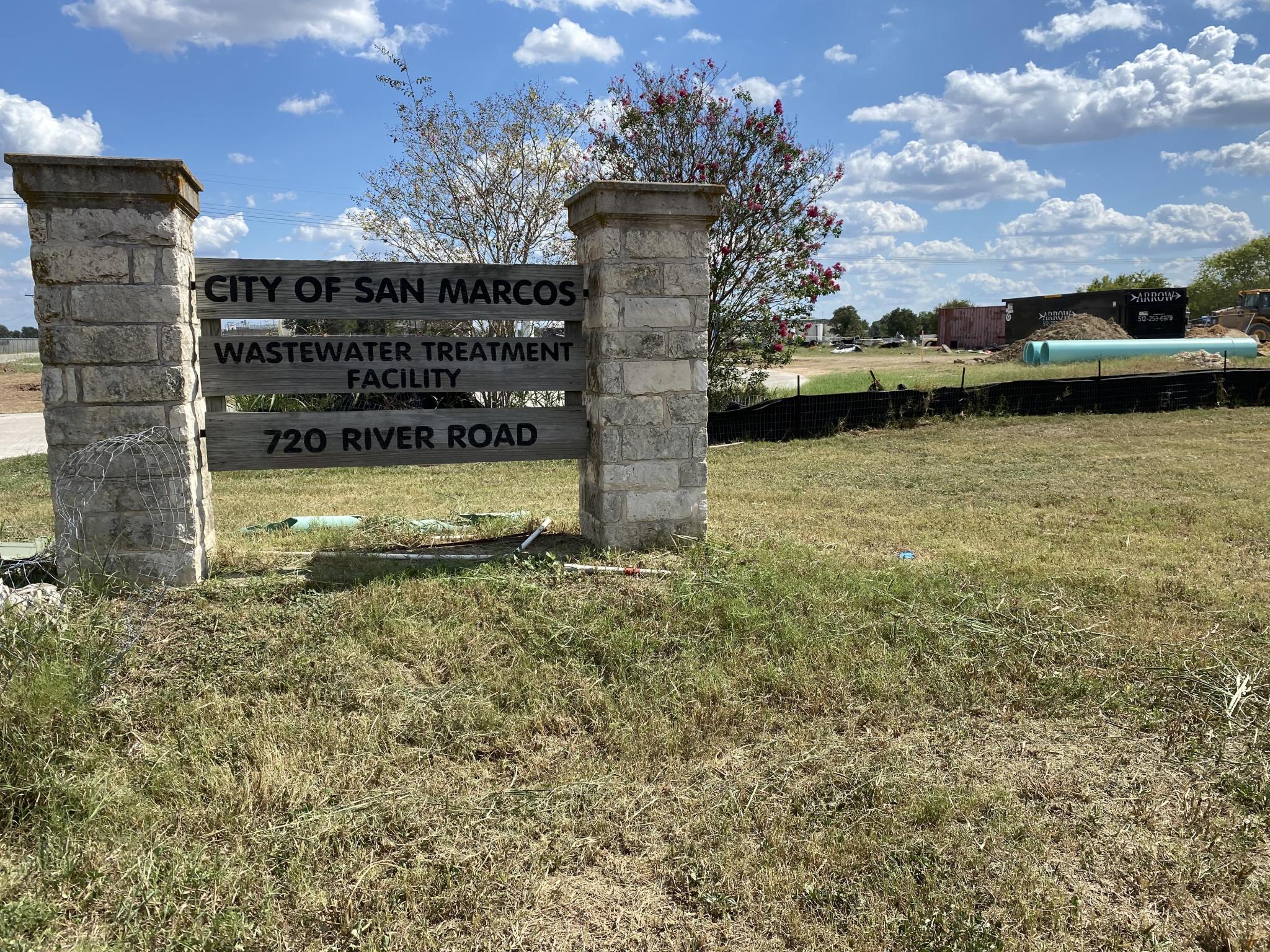
The City of San Marcos recently participated in the U.S. Department of Health and Human Services’ COVID-19 Wastewater Monitoring Program. Above, the entrance sign to the city's Wastewater Treatment Facility Daily Record photo by Nick Castillo
City participates in COVID-19 wastewater testing
For a 10-week period during the summer, the City of San Marcos participated in the U.S. Department of Health and Human Services’ COVID-19 Wastewater Monitoring Program.
Between June 10 and Aug. 12, the city’s wastewater department collected 24-hour composite samples and sent them to be tested by Biobot Analytics.
“We initially participated in the funded program last year for six weeks; March 30, 2020 to May 5, 2020,” said Paul Kite, assistant director of Water/Wastewater Utilities, in an email. “When Biobot Analytics received more funding for the 10-weeks span; we participated from June 8, 2021 to Aug. 12, 2021. The 10-week funded sampling period has ended.”
To test the wastewater, Biobot Analytics uses protocols adapted from the Centers for Disease Control and Prevention, relying on detecting genetic fragments of the virus excreted in stool by qPCR analysis. The sampling, however, does not determine if the virus is dead or alive.
Biobot receives 3x50 milliliter samples that are frozen and immediately pasteurized on receipt. Pas teurized samples are stored in 4 degrees Celsius for up to three days before viral concentration. Biobot then takes 15 milliliters of sewage for viral concentration and RNA extraction. CDC primers are then used to target SARS-CoV-2.
Biobot interprets the data in two ways: Raw viral concentration, the raw SARS-CoV-2 viral concentration directly measured by the laboratory qPCR assay; and normalized viral concentration — the amount of SARS-CoV-2 viral concentration normalized to a fecal indicator to account for differences in dilution. For normalized viral concentration, Biobot uses Pepper Mild Mottle Virus (PMMoV) as an internal control.
During the 10-week testing period in the summer, the City of San Marcos saw both a decline and rise in COVID-19 present in its wastewater.
On June 8, Biobot testing detected 87,770 viral copies per liter of sewage at the San Marcos Wastewater Treatment Facility but then saw a decrease to 22,206 viral copies per liter of sewage on June 15 and 17,082 viral copies per liter of sewage on June 22.
On July 7, however, Biobot detected 249,495 viral copies per liter of sewage at the San Marcos Wastewater Treatment Facility and 544,820 viral copies per liter of sewage on Aug. 5.
“The data shows an increase and decrease in the viral concentrations (genome copies per liter of wastewater) of SARS-CoV-2 over the past few weeks (during testing),” Kite said.
Biobot’s test reports didn’t show variant concentrations present in the wastewater at the time of the testing, Kite said. Additionally, the COVID-19 vaccine wasn't a factor and didn’t skew the data; any vaccine shedding in stool is minuscule, Kite added.
With the 10-week testing period over, Kite said the city doesn’t have any future plans for wastewater testing.
“Biobot Analytics will continue testing wastewater for the foreseeable future,” Kite said. “We currently do not plan on continuing the study past the 10-week period. Biobot Analytics was only funded for 10-weeks by the U.S. Department of Health and Human Services COVID19 Wastewater Monitoring Program.
“While we and Biobot Analytics are hopeful that program funding will be reinstated in the near future, they are providing participating communities the opportunity to continue sampling with Biobot Analytics at a cost of $350 per sample,” Kite added.











